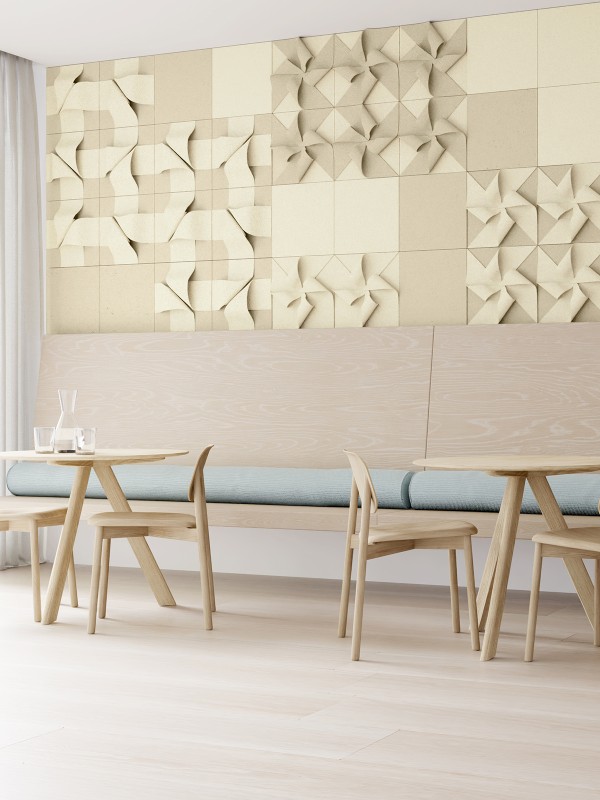
Behind the Design
Tuck + Turn
For Swedish designer Mia Cullin, creating furniture and products that feel welcoming and friendly is core to her approach to design. For nearly twenty-five years, Mia has conceived of everything from textiles and decor to lighting and furniture. With Tuck + Turn, she expanded her array of work to include acoustic wall tiles that bring her unique and playful aesthetic that her designs are known for.
Tuck + Turn highlight the structural properties of wool felt by folding wide strips this way and that. Rotate and repeat tiles to create a myriad of playful patterns in single or multi-color schemes.
Mia’s approach to the collection, and her work in general, comes from a deep interest in traditional craftsmanship that often combines basic geometries and simple shapes with hand-crafted details. And in this playful collection, Tuck + Turn do just that. We connected with Mia to learn more about the playful pair, what this year has in store, and our shared passion for sustainability.
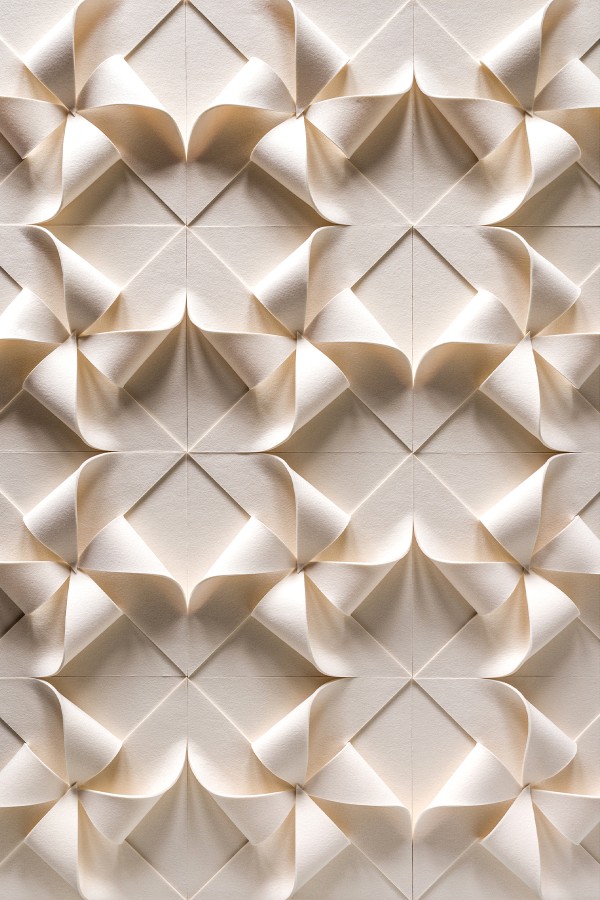
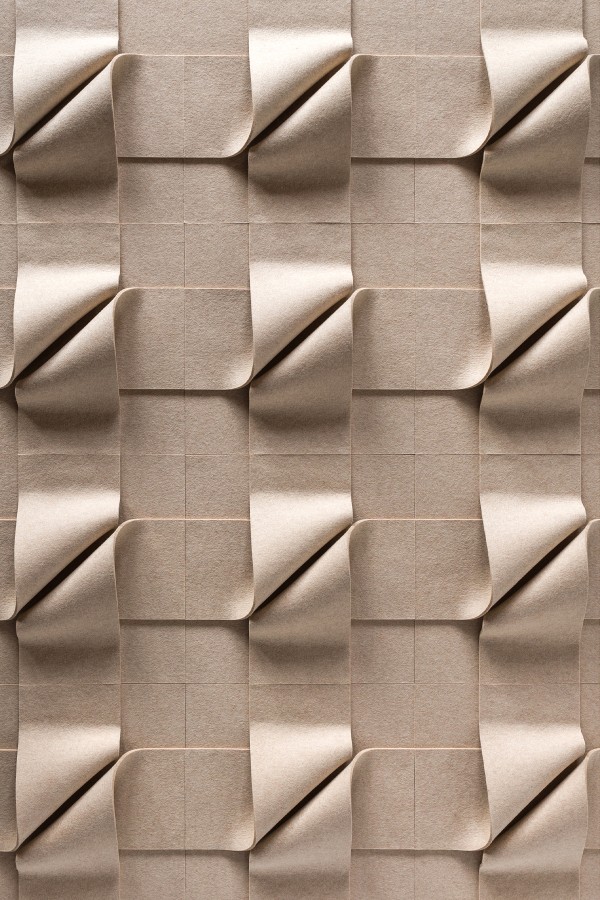
Tuck and Turn are such whimsical designs and evoke a subtlety and softness found in so much of your work. What feelings do you want this design (and your work in general) to elicit?
I try to design furniture and objects that feel friendly and welcoming, such as the Orkester bench on right. I always want the consumer to feel that the product is thoughtful, well done, and mindful of every detail. It’s also important that they feel that every product I design is something they would want to use and live with for a long time.
Where do you look for inspiration when starting a new project?
I love my job and have three children and a dog, so I rarely need to seek it out. Inspiration can take form in anything on any given day: a dream or a thought one of my kids tells me, a walk by the sea with my dog, a facade in town, or even something as simple as something dropped on the pavement. It also depends on my mood; I may be more open to new impressions while traveling and outside my element.
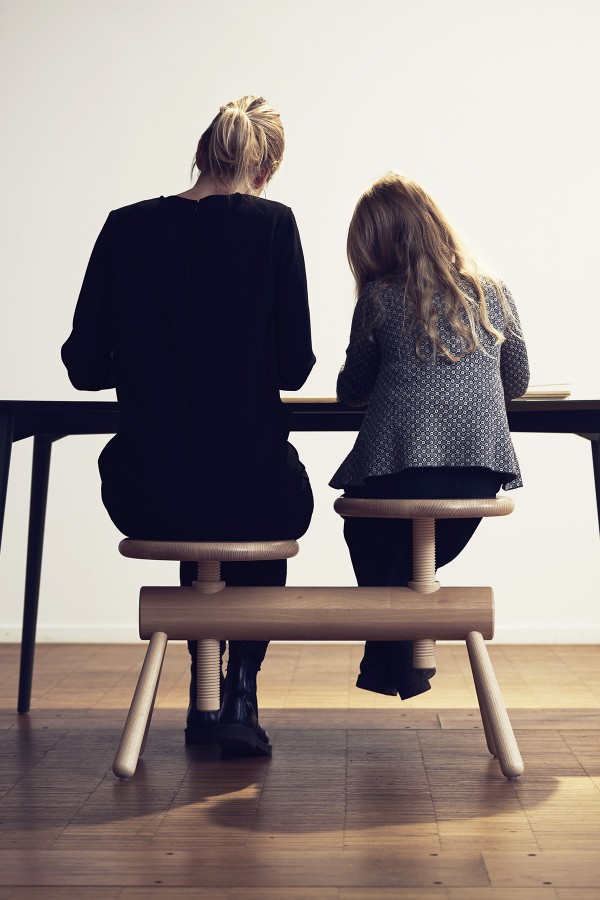
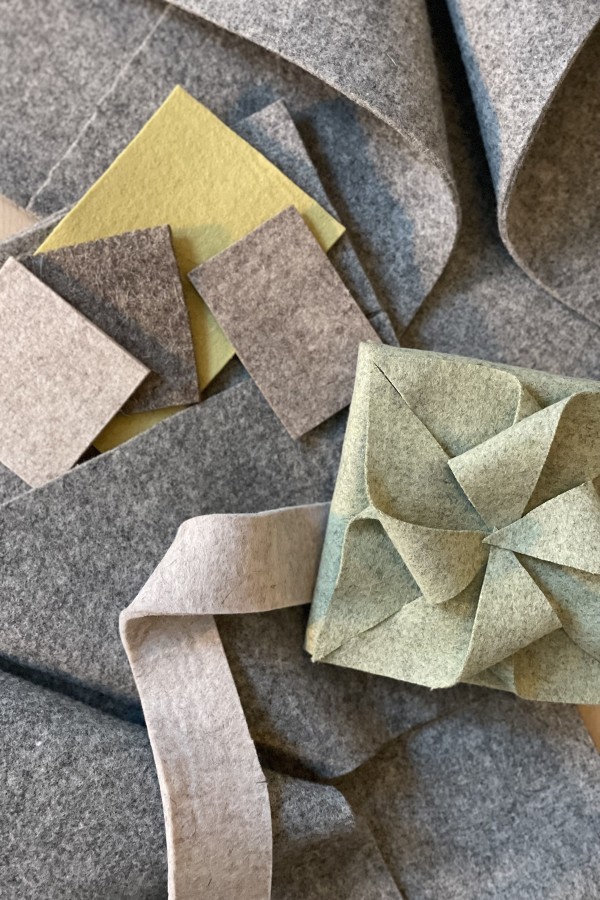
What inspired the designs for Tuck and Turn specifically?
The first panel I designed was Turn. Like so many, I have always loved the design of the pinwheel. The folding of it is simple but brilliant. I like the playful shape and that it has movement and direction.
For Tuck, I already had the idea for folding in the back of my mind but wanted to make a more modular design. Specifically, I liked the idea of having the ability to turn and rotate individual panels that, together, would create an array of patterns.
Can you walk us through the evolution of this collection?
Apart from the design, the idea was to create a product that could re-purpose smaller, leftover pieces of felt from production. So, there were specific measurements and material parameters I wanted to consider.
I often work hands-on when starting a new project. Folding is an interesting way to create shape and form. You can create volume with a small amount of material.
This is also something I had in mind when designing the panels of Tuck and Turn to absorb as much sound as possible. I wanted to build “pockets of air” to create an efficient way to absorb sound. So, I started to sketch the concept and then began folding paper and later wool felt.
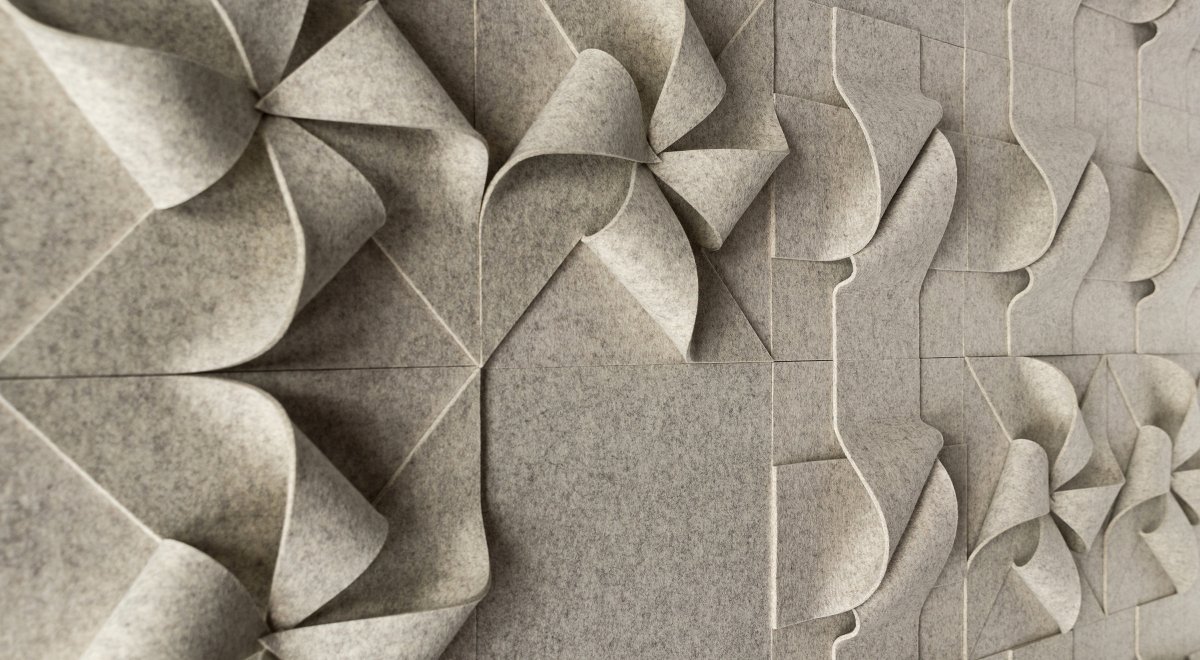
“Apart from the design, the idea was to create a product that could re-purpose smaller, leftover pieces of felt from production. I often work hands-on when starting a new project. Folding is an interesting way to create shape and form. You can create volume with a small amount of material.”
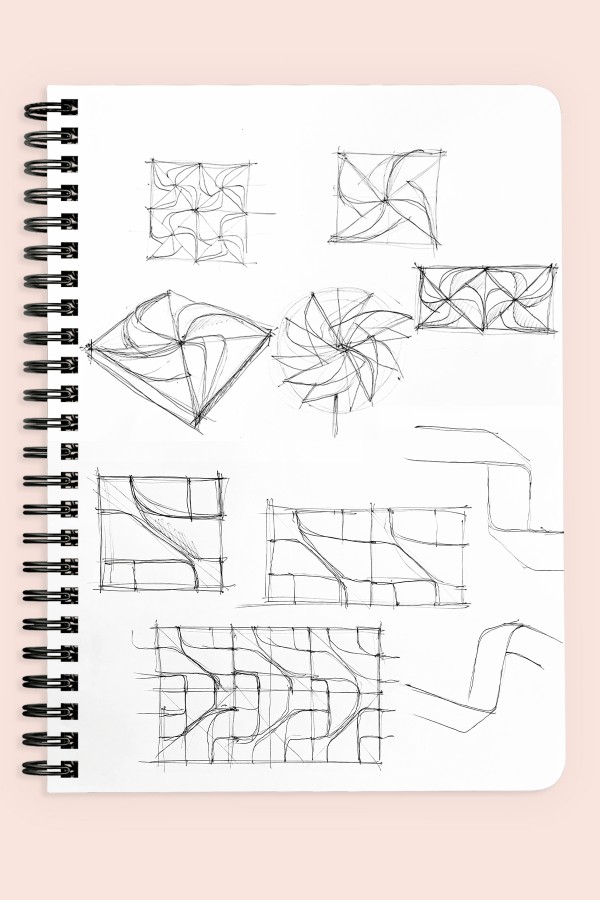
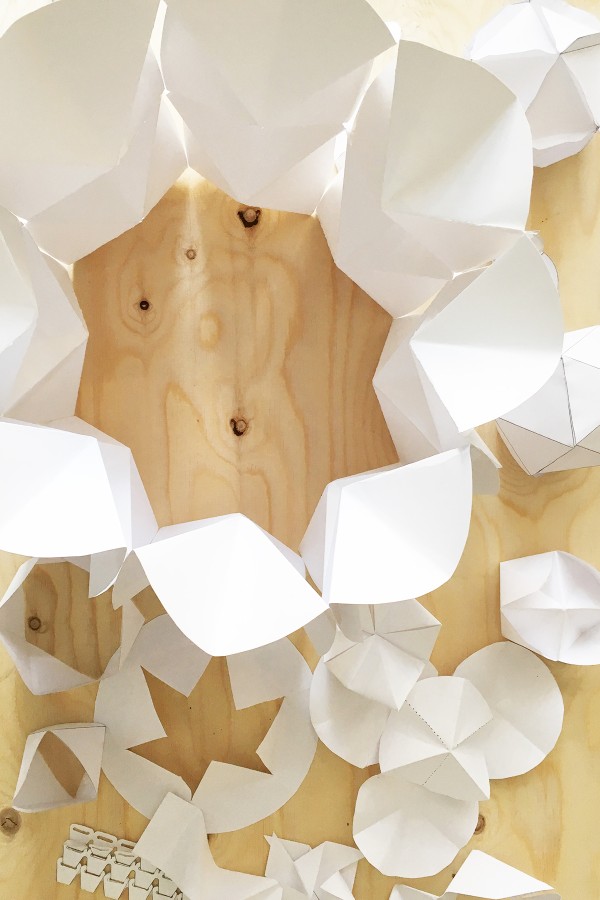
When you approach a new design, where do you start (sketching, working directly with the material, digital rendering, etc.)?
I usually start with paper and pen or craft models in simple materials like paper and continue from there with scale models in materials true to the final product. Later I turn to the computer. For me, the sketch phase is the most important part of the planning and should be long and winding.
You’ve used wool felt in previous product designs (the Lily Rug). What first drew you to wool felt?
To start, I find wool felt very beautiful. It is natural and sustainable, and I love the softness. It was an obvious choice to work with wool felt since it is easy to handle and has similarities to paper, which is a material that I often use when building models.
What makes felt a good fit for Tuck and Turn?
Wool felt is firm and strong but still soft and flexible, perfect for these products. Since felt is a non-woven material, it’s super easy to work with. The edges don’t fray and can be left raw. It’s also the perfect material for products designed to absorb sound. Wool felt is soft and light and contains air. The combination of textile fibers and air is perfect. It’s also naturally flame-resistant, an added bonus for interior applications.

“It is necessary to work with products that have the least impact on the environment as possible. One way to do that is to work with natural, recycled, or recyclable materials. I feel strongly that designers have a responsibility to consider a product’s quality, use as little material as possible, avoid certain materials, and be aware of the impacts of production.”
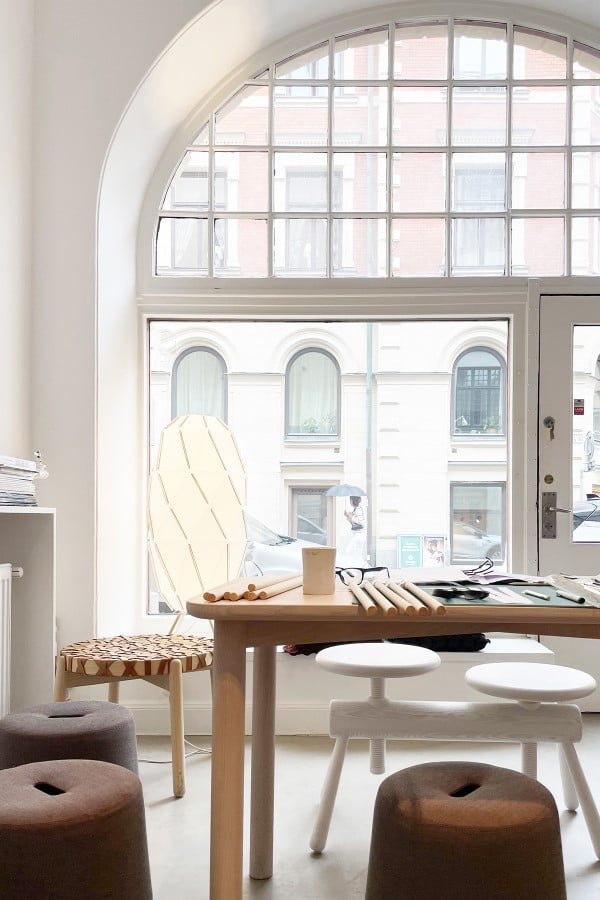
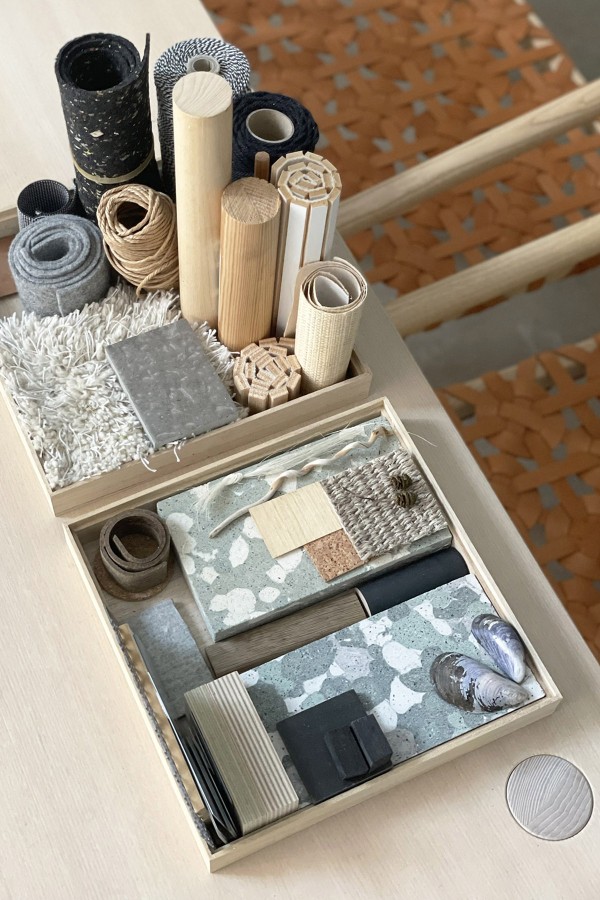
Are you currently working with any other natural materials? Are there any you’re curious about or would like to experiment with in the future?
I’m working with a variety of solid woods, including pine, oak, ash, and birch. I also recently launched a chair with a back in braided hemp with a seat and back cushion filled with wool. Last year I had the opportunity to design for a new Swedish company called Verk. They exclusively work with natural, local materials, and since then, I have entirely stopped designing upholstered furniture filled with polyester. When there is wool (and other natural materials), you always have alternatives that make more sense.
In the future, I would love to work with different cellulose materials, such as fabrics and bio-composites.
How does sustainability inform your approach to design?
It is necessary to work with products that have the least impact on the environment as possible. One way to do that is to work with natural, recycled, or recyclable materials. I feel strongly that designers have a responsibility to consider a product’s quality, use as little material as possible, avoid certain materials, and be aware of the impacts of production. We should always ask ourselves: How long will it live? Does the product add something to the market? Can it have a second life?
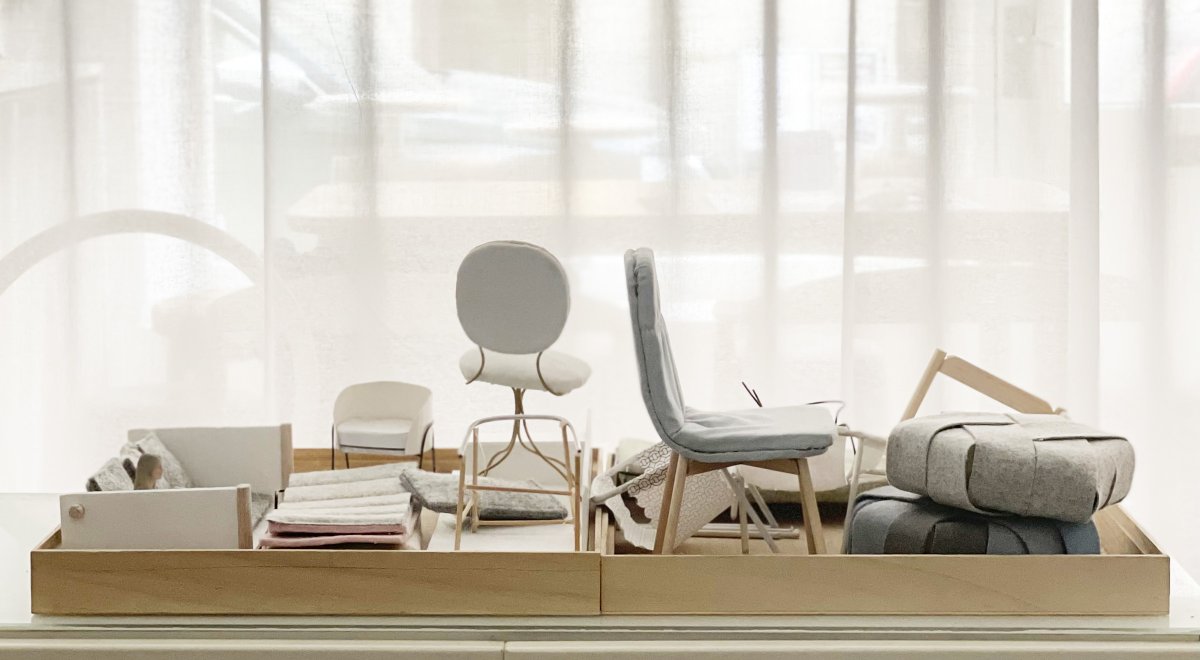
How has the design community in your part of Sweden impacted your work and aesthetic?
I live just outside of town but have my studio in the city center of Stockholm. Many of the designers in Sweden live in our capital, so we are more or less familiar with each other. I have a few interior and product collaborations with other designers and manufacturers. Many Swedish manufacturers have their production in Southern Sweden and a showroom in Stockholm. With everything so close, it’s easy to meet and even check in on prototypes in the workshops.
Stockholm, and its surrounding area, are the most densely-populated area in Sweden. The town is situated on an island where there are a lot of parks and green areas in the city center, and just outside Stockholm, we’re surrounded by a large archipelago. I think living and working close to nature affects a designer’s work. In Sweden, we also have a strong tradition of craft, such as wood, textile, and ceramics, a tradition that inspires many of us.
What are you working on now - can you share any sneak peeks of upcoming projects? What has you excited about the coming year?
Right now, I am working on a light armchair and a project in steamed wood. Both are upholstered furniture, something I am really interested in as there are so many different ways to do it.
This year, I am excited that things are opening up again and that there are more possibilities to have in-person meetings. I’m also thrilled about the return of fairs and exhibitions. I am looking forward to visiting Salone del Mobile in Milan in June.
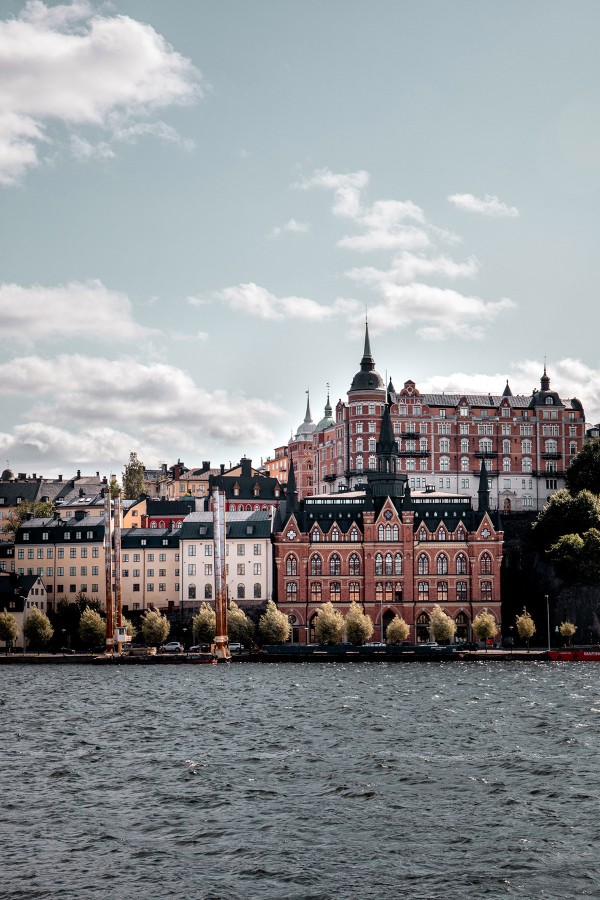
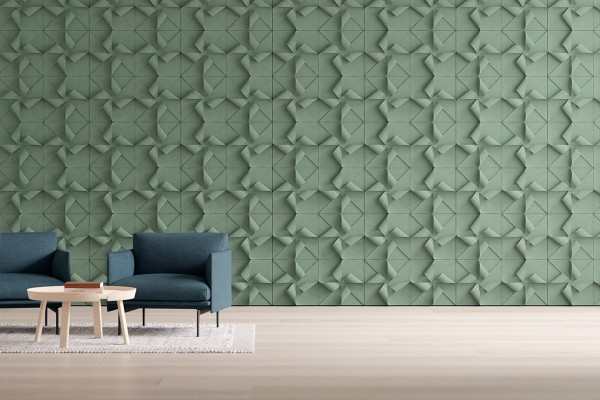
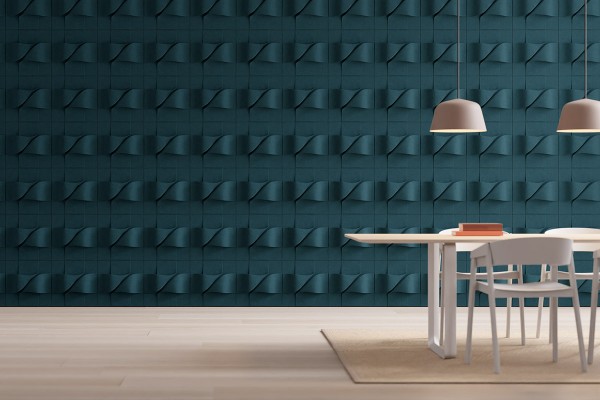
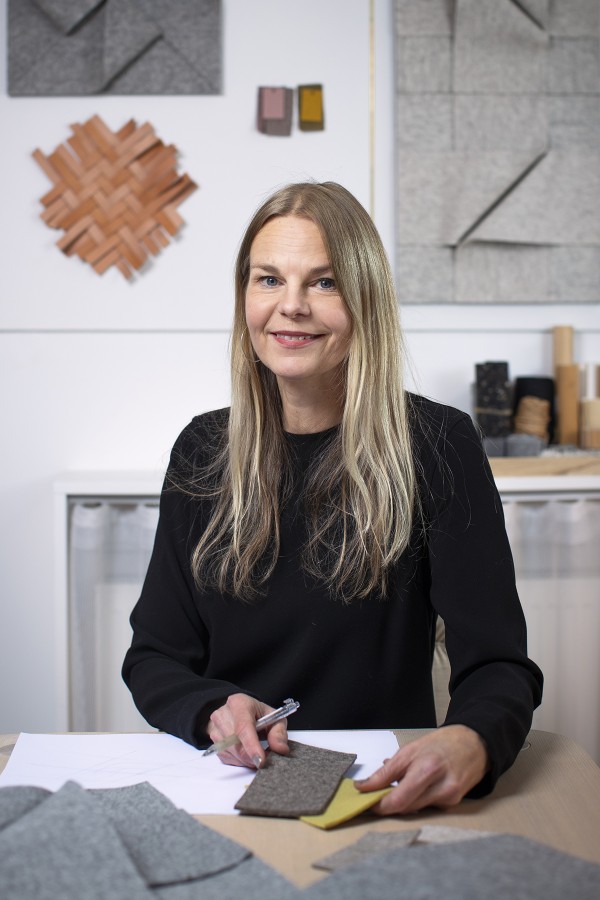
About Mia Cullin
Mia Cullen is an accomplished interior, furniture, and product designer based in Stockholm, Sweden. With a deep interest in traditional craftsmanship, Mia’s work often combines simple shapes and geometries with distinct and hand-crafted details and shows an honesty and truthfulness that expresses her roots in a Nordic design.